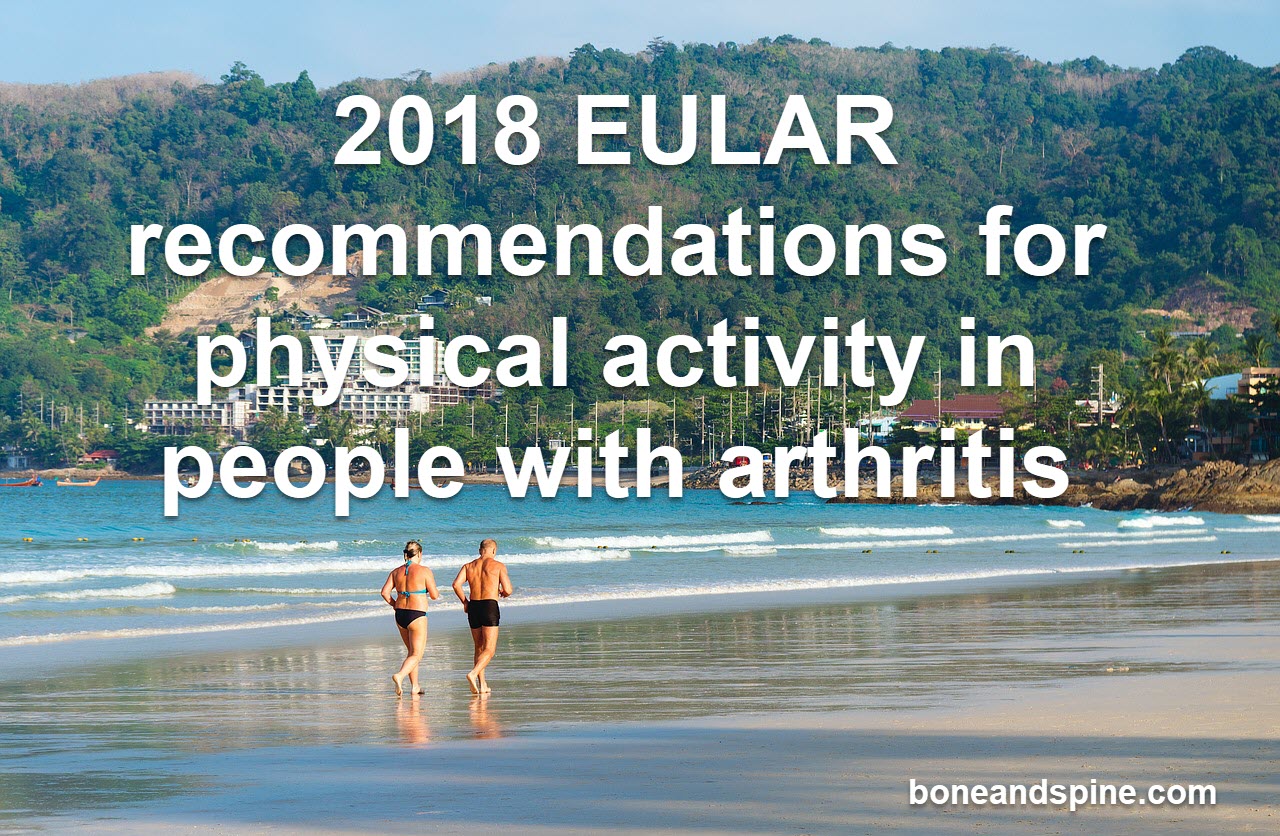Last Updated on October 28, 2023
There is no doubt that patients with osteoarthritis and inflammatory arthritis are benefited by regular exercises. In fact, recommending physical activity is the standard of care in the management of these conditions.
To help patients and healthcare providers make a better selection on physical activity choices, European League Against Rheumatism (EULAR) has come out with new guidelines for physical activity in adults having arthritis.
The new guidelines have been published in the Annals of Rheumatic Diseases
The authors noted that people with inflammatory arthritis and osteoarthritis could be reluctant to get involved in physical activity.
The people may be concerned about damage to the joint.
The recommendations should be implemented after evaluating the condition of the patient and individualizing the needs.

How Recommendations Were Devised
The 2018 EULAR Task Force carried the quantitative analysis of data from 11 studies involving patients with rheumatoid arthritis and spondyloarthritis, and osteoarthritis of either the hip or knee.
It was found that
- The aerobic exercises had a moderately beneficial effect on cardiovascular fitness in all conditions
- A moderate benefit from strength training exercises in rheumatoid arthritis and osteoarthritis
- Aerobic exercise plus strength training, along with exercises to improve flexibility, were not found to be beneficial in patients with either SpA or OA.
The authors also point out that standard public health recommendations for PA are safe and beneficial.
Public health recommendations for Physical Activity
These are existing recommendations from the American College of Sports Medicine and the American Heart Association for the general public [Not for arthritis] and include the following –
- Adults, 18 to 65 years of age should engage in either
- moderate-intensity aerobic activity for a minimum of 30 minutes 5 days a week or
- vigorous-intensity aerobic activity for a minimum of either 20 minutes on 3 days a week or
- a combination of both.
- The activity can be accumulated by doing bouts of exercise lasting at least 10 minutes each to reach a total 30 minutes a day.
- Adults need to engage in any activity that maintains or increases muscle strength and endurance on at least 2 days a week.
- Anyone who wants to improve their level of fitness, reduce the risk for chronic disease and disabilities, or prevent unhealthy weight gain may exceed the minimum recommended levels.
EULAR 2018 Recommendations For Arthritis Patients
Promote Physical Activity
It advises all the healthcare workers to increasingly advocate for physical activity in patients of inflammatory arthritis and osteoarthritis.
Intervention by healthcare professionals who are well versed about the disease and also the principles of physical activity could be desirable.
Assess Regularly
It helps to regularly assess the physical activity levels. Authors suggest that the type of exercises [aerobic or cardiorespiratory, muscle strength, flexibility and neuromotor] should also be routinely assessed.
Individualize
For any contraindication, the healthcare professionals are advised to follow general or national guidelines.
The recommendations should be individualized and modified if needed with the progress of the patient.
Educate on Benefits
Patients should be educated about the benefits of exercise on disease symptoms and progression.
They should also discuss strategies that would encourage patients to participate and keep themselves motivated.
Patients should be encouraged to select from different interventions which could be land-based or water-based to achieve the targets.
Patients need to be explained the need and importance of supervision in selected subsets of exercises and work on how that supervision could be achieved.
Use of wearable gadgets such as Fitbit, a logbook, etc could be used for record-keeping and monitoring.
Web-based apps and videos could be used for learning and reinforcement as well.
Conclusion
The underlying message being stressed is that most of the people with arthritis can do physical activity safely.
There are many joint-friendly activities including walking, swimming, cycling etc.
Healthcare workers need to ask their patients if they are doing any activity and encouraged to increase the level of physical activity.
And those who do should be encouraged to keep that up.
For a full text of the recommendations, please follow the link in the references.
References